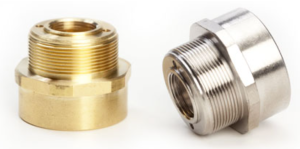
Japanese Knotweed is a vigorous growing, winter hardy, perennial plant known for causing property damage. Once it begins to flourish, it can quickly ravage stone and brickwork within the course of a year. It can damage your undersurface pipes and lead to further issues such as blocked drains due to the damage it causes. If you have issues with your drain contacting a Drain Lining Company is your best option. If not controlled, it spreads quickly. Although feared, many homeowners are unaware just how Japanese Knotweed spreads. Here we’re going to go into it a little deeper.

Image Credit
Identifying the plant
Once you’ve seen Japanese Knotweed, you’ll likely never forget what it looks like. Shield-shaped leaves form on bamboo-like stems and vines to produce white, seed-bearing flowers. But this is not how you’ll first notice the plant invading your property.
Most homeowners think back with regret about the first time they noticed knotweed and did nothing about it. This is because the young plant looks nothing like its mature self. Heart shaped young leaves bud on purple, spotted stems. These curious nubs push delicately out of the ground of a neighbour’s wall and it doesn’t grow that fast. Firstly, they need to put roots down before they become vigorous.

How does Japanese Knotweed spread?
If you winced at the term, ‘seed-bearing flowers’ you’ll be forgiven for thinking the wind brought the plant to your garden. However, knotweed is a dioecious plant, meaning both flowering females and fertilising males are required to produce viable seeds. But there are no male knotweed plants in the UK, which begs the question – how does Japanese Knotweed Gloucestershire located and elsewhere spread and multiply?
In 99% of cases, specialists deal with knotweed growing from fibrous rhizomes. Essentially, plants can either travel from neighbouring properties underground or be brought to a property via contaminated soil.
If you’re trying to remove knotweed yourself, you are much more likely to spread the plant than you are to eradicate it. What’s more, disposing of it can be very difficult. The best way is to burn it, but it needs to be dry first. At this time, it can easily re-root or parts can blow away. Less than a gram of knotweed root is required to produce a new plant.
For this reason, it is essential that you only buy or move soil into your garden from a known source. And if you suspect you have Japanese Knotweed, get specialist advice as soon as possible.




